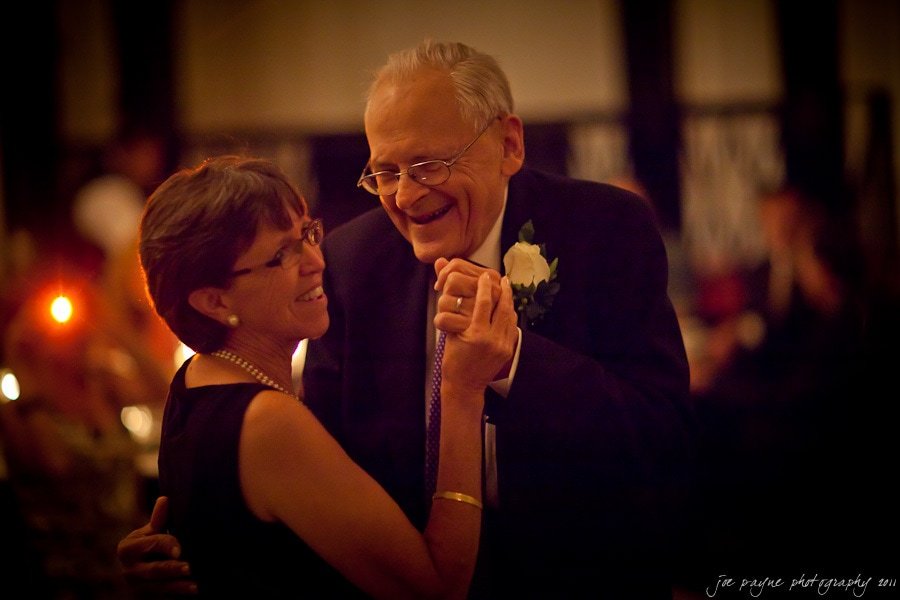
This is an image that just makes me smile. Capturing moments between loved ones is something I really enjoy doing. I’m not sure if it’s because my wife and I live so far away from our families and loved ones back home in England and Panama and we miss them, or if it’s just the old romantic in me, but I love watching people interact and have fun together. It’s one of the reasons I love what I do.
In this case, we can see the bride’s mum and granddad sharing a dance and a laugh later on in the reception. No real mystery in how the shot was put together, except by shooting in manual mode and compensating for the darker environment using available light versus a flash, which I always prefer to do in order to preserve the integrity of the moment. Not using flash allows me not to be noticed so much and so it also lets people be themselves instead of making them aware of my presence and them getting self-conscious in front of the camera. I tend to come away from each of my weddings with a lot of great candid shots as the gear I use affords me the luxury of just hanging out and waiting for moments like this to happen.
Another reason I like this image is that I am in the process of reading the book “An Inner Silence: The Portraits of Henri Cartier-Bresson”, where he talks about the modus operandi the photographer must use in order to capture the true personality, the titular “inner silence”, of the subject. I really like the idea of capturing people as they really are without them being aware of, or acting for, the camera. Cartier-Bresson likens the click of the shutter to the “bite of a mosquito” which I think is a great metaphor for the act of capturing someone’s likeness for posterity.
Aside from the characters here, I like the spontaneous laughter as well as the lighting, which is warm but subdued and enhances the feel of the moment. Compositionally speaking, the picture works for me with the subjects being framed by the black pillars in the background and the “V” of their arms as they dance. I also like the way both subjects’ eyes are obscured by the frames of their glasses; it leaves a certain amount of the moment to them versus us as onlookers.
Thanks again for stopping by.


